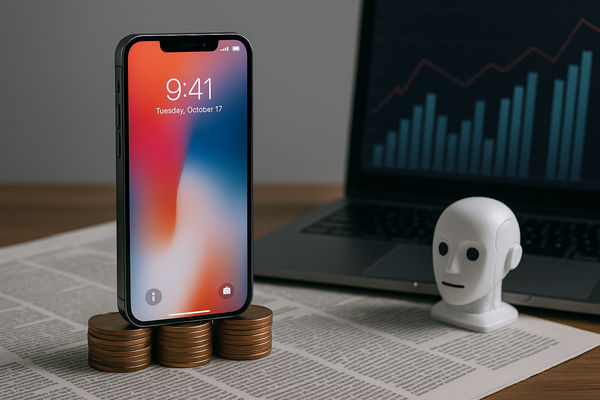
Apple (NASDAQ:AAPL) surges on iPhone 17 demand, an expanding Apple Intelligence push and new U.S. investment flows. The stock has climbed roughly 18% in three months as product cadence and services revenue accelerate. Short term, iPhone 17 reception and tariff headlines are driving swings. Longer term, AI capability, talent buys and supply‑chain resilience will determine margin resilience and growth. This matters for the U.S. because of on‑shore investments; for Europe because of Apple’s expanded renewables bets; and for Asia given supplier concentration and tariff exposure. Compared with prior cycles, the company faces a bigger AI test while sitting on a large upgrade runway.
Market reaction and near‑term catalysts
Apple shares have jumped about 18% over the past three months on news flow tied to product launches and corporate initiatives. That move reflects a mix of optimism and headline momentum. Analysts are split. One said Apple may not see positive catalysts until spring. Jefferies (NYSE:JEF) has warned that fresh U.S. tariff threats could squeeze iPhone 17 margins, citing tariff scenarios that would directly raise import costs for hardware.
In the near term, market swings will track a few discrete drivers: iPhone 17 sales data, Services growth metrics, and commentary on tariff carve‑outs. Investors also responded to broader risk tone — softer trade rhetoric out of Washington has lifted risk assets and technology stocks, while any re‑escalation would weigh on global supply chains and investor sentiment.
Products, AI and talent: why Apple’s next phase matters
Apple’s product cycle remains central. Analysts point to a potential FY26 replacement wave: over 315 million iPhones reportedly haven’t been upgraded for four years, creating a material upgrade base if consumer economics hold. That explains the immediate enthusiasm around iPhone 17.
Beyond hardware, Apple is expanding Apple Intelligence and is reported to be recruiting prompt and agentic AI talent. That push follows public criticism from former CEO John Sculley, who argued that agentic AI should be a priority. Apple’s strategy now combines device refresh, higher‑margin Services and AI integration — a three‑pronged effort to drive revenue and deepen ecosystem locks.
Talent buys and platform upgrades are long‑lead items. Hiring prompt engineering teams and embedding agentic features into iOS and services will shape revenue mix over several years, not weeks. In the short term, investor focus will be on product sell‑through, early AI demos and guidance chatter from Apple.
Supply chain, geopolitics and margin pressure
Geopolitics is an active risk for Apple. Jefferies flagged tariff risk to iPhone margins if imports from China lose exemptions. Separately, financial institutions are shifting capital to on‑shore critical industries. JPMorgan (NYSE:JPM) said it will directly invest $10 billion in companies it deems critical to U.S. national security. That initiative sits alongside a prior $1 billion lending package from banks including JPMorgan and Goldman Sachs to MP Materials (NYSE:MP) to build a rare‑earth magnets factory — components used by Apple and major automakers.
For Apple this creates a double effect. On one hand, more domestic capacity for critical inputs helps reduce policy risk. On the other, tariff moves and supply restrictions would raise unit costs and compress hardware margins, especially in the near term. Asia remains central: Taiwan Semiconductor (NASDAQ:TSM) and other regional suppliers are key to Apple’s component pipeline, so any export controls or tariffs ripple quickly.
Apple’s push into European renewables — an expansion to match customer energy use — is a strategic hedge on reputation and regulatory exposure in Europe. Those investments increase operating complexity but support long‑term positioning with regulators and corporate buyers.
Key takeaways
- iPhone 17 and Services are the immediate drivers of sentiment; early sales and guidance will set the tone for the quarter.
- Apple’s AI hiring and Apple Intelligence upgrades are long‑term growth levers that will take months to translate into revenue and product differentiation.
- Tariff and supply‑chain moves remain the primary margin risk; Jefferies highlighted direct pressure on iPhone 17 profits if import exemptions end.
- U.S. industrial capital is shifting toward on‑shore critical supply chains — JPMorgan’s $10 billion pledge and bank lending to rare‑earth projects link directly to Apple’s input security.
The story for Apple is therefore a mix of fast and slow forces. Product cycles and services growth can move markets quickly. Talent investments, supply‑chain reconfiguration and geopolitical policy will shape profitability over multiple years. Watch the coming weeks for concrete data points on iPhone sell‑through, Services subscriptions and any tariff or exemption updates that could reprice margins.












